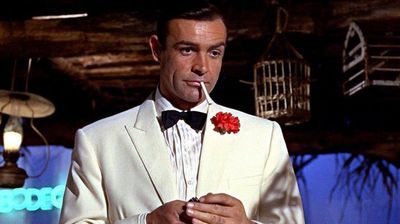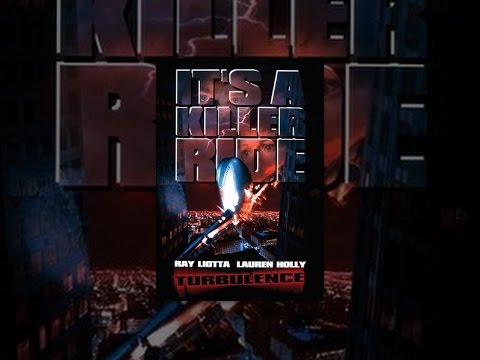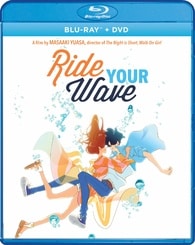Why Sean Connery Was the Best Bond

Even in a year when it seems like we’ve lost celebrities like never before, the passing of Sean Connery feels like a different matter altogether. He was one of those towering figures that felt indestructible, and he was a constant presence for decades. Had he never played the role of James Bond, Connery may or may have not become a renowned star, but it’s hard to imagine the 007 series blasting off without him. His casting as Bond was the very definition of catching lightning in a bottle.
Whether Connery had been the first or the most recent actor to play the character, assigning him the top spot would be just as easy. We’ll never know what the cinematic role of the relatively ambiguous character from Ian Fleming’s novels would have become without Connery to set its template. And yet, to praise his portrayal as the only worthy one and dismiss the five others as “a bunch of imposters” (like some pundits have in recent days) is also an exaggeration. Every one of the actors who played Bond followed Connery’s lead, but they all have brought something to the table and their performances range from acceptable to great. Besides, it’s not as if the six entries starring Connery are all necessarily among the best.
Sean Connery’s biggest achievement as 007 was turning a killer with more than a few quirks and flaws into the ultimate admirable hero. Bond was written for the movies as an all-knowing connoisseur, aware of the precise temperature above which Dom Perignon should never be consumed just the same as the precise number of years gold would remain radioactive if a dirty bomb were to explode beside it. The character of Bond as portrayed by Sean Connery was also, let’s face it, a bit of a bastard, if a lovable one at that. His Bond cheats at golf and backgammon (true, usually in response to a villain’s own deceptions). He commits some pretty dubious actions like spanking away dumb blondes so that “men talk” may take place. He makes sure to include a dalliance with the villains’ henchwomen before he forces them to face the music (“Well, I certainly wouldn’t have killed you before!”). His Bond even went as far as blackmailing a naïve masseuse into surrendering herself to him at the risk of losing her job in “Thunderball” (“Well, my silence could have a price!”). It was easy to forgive these indiscretions not just because his Bond came from a far less politically correct time (let’s face it, Daniel Craig would never get away with such things these days) but mostly thanks to Connery’s charisma. In lesser hands, he would have seemed like a heartless assassin who prioritizes getting the most pleasure out of life.
Connery looked merely comfortable in the role as the writers injected more humor with every picture. Notice the difference in the exchanges between his Bond and the villains Dr. No and Auric Goldfinger. The early ones were dead serious and menacing while in the latter he spent a good deal of time targeting the evildoer’s ego and invariably hitting a bullseye. It is true that Connery never got the opportunity to play Bond in the tougher entries of the series where the character is brutally tortured or where he suffers the loss of a close one. If anyone should wonder how he could have done in a meatier Bond role, there are later examples in his career such as his role as Jimmy Malone in Brian DePalma’s “The Untouchables.”
How does Connery compare to other Bonds? Even though Timothy Dalton clearly had the presence required for the role, and was great in the action scenes, his character was often written as too decent, and caring, a far cry from Connery’s lovable weasel. Some people detest Roger Moore’s interpretation, but when given the right material in the right doses as in “The Spy Who Loved Me,” he came up with one of the best films of the series. Unlike Connery, Moore clearly wasn’t at his best in the few spots when he tried to act though with women (see the Maud Adams shower scene in “The Man with the Golden Gun”) but he could play the lovable prick as well as anybody. Unfortunately, he tended to go a bit too far with the humor and most of the series’ embarrassing moments seem to belong to him (see the Tarzan yell in “Octopussy” or the snowboard “California Girls” moment from “A View to a Kill”). Moore was also allowed to grow too old in the role even if he made some of the most purely entertaining films in the series.
Pierce Brosnan handled the nastier part of Bond’s equation rather well, but his interpretation became more politically correct with each entry. Bond’s predicaments became less black and white under his watch, but he often came off a bit too heavy handed and clichéd—his mannerisms when facing the deaths of Paris Carver and Electra King are almost identical to those when he sings “The Winner Takes it All” in a duo with Meryl Streep in “Mamma Mia.” When it comes to cringeworthy moments, nothing beats Brosnan’s tsunami surfboard sequence in “Die Another Day.” Like Connery, Brosnan didn’t leave the role on the highest note, to put things kindly.
George Lazenby’s Bond fared surprisingly well. It surely helped him to be paired with a first rate leading lady like Diana Rigg, and his interpretation, much like Connery’s, certainly doesn’t lack an edge. Still, as much as I love “On Her Majesty’s Secret Service” I have never understood why the one film where Bond falls in love had to be the same one where he aspires to dalliance as many girls as humanly possible, coming out as a bit of a creep.
My favorite non-Connery Bond has surely been Daniel Craig. He’s been blessed to play the role in some of the best-written sequences (think of his first meeting with Eva Green on the train in “Casino Royale”) and in some of the most gut-wrenching moments of the series such as the deaths of Vesper and Judi Dench’s M, and he’s more than lived up to them. Craig has also been the only James Bond to match Connery’s when it comes to creating a real sense of danger, such as when he first meets Javier Bardem’s villain in “Skyfall.” Craig does come up a tad short to Connery in the humor department, and few actors in the history of cinema can aspire to match Sean’s larger-than-life screen persona.
All of this is not to claim that Connery’s interpretation of Bond was perfect. He came out in simpler, less realistic times when trivialities such as having his hair perfectly in place were a must (think of the moment when he takes off the radioactive suit in “Dr. No” and dishevels his hair, only to have it magically corrected in the very next frame). More importantly, as Connery’s Bond films got bigger and bigger, he appeared less and less interested in them. By the time he made “You Only Live Twice,” his character was reduced to pushing buttons on gadgets and uttering one witty double entendre after the other. When they gave Connery a giant, hollow volcano with which to play, he looked bored; when they provided him a simple one-on-one confrontation where he has to outwit a ruthless killer “From Russia with Love” he created some of Bond’s most suspenseful moments. By the end, even though he was three years younger than his successor, he looked like was ready for other things. “Diamonds Are Forever,” his last Bond entry, was clearly his worst. And yet nothing takes away the fact that after almost 60 years of Bond films Connery’s greatest moments are yet to be matched, and he still has the best one-two punch in the series with “From Russia with Love” and “Goldfinger.”





